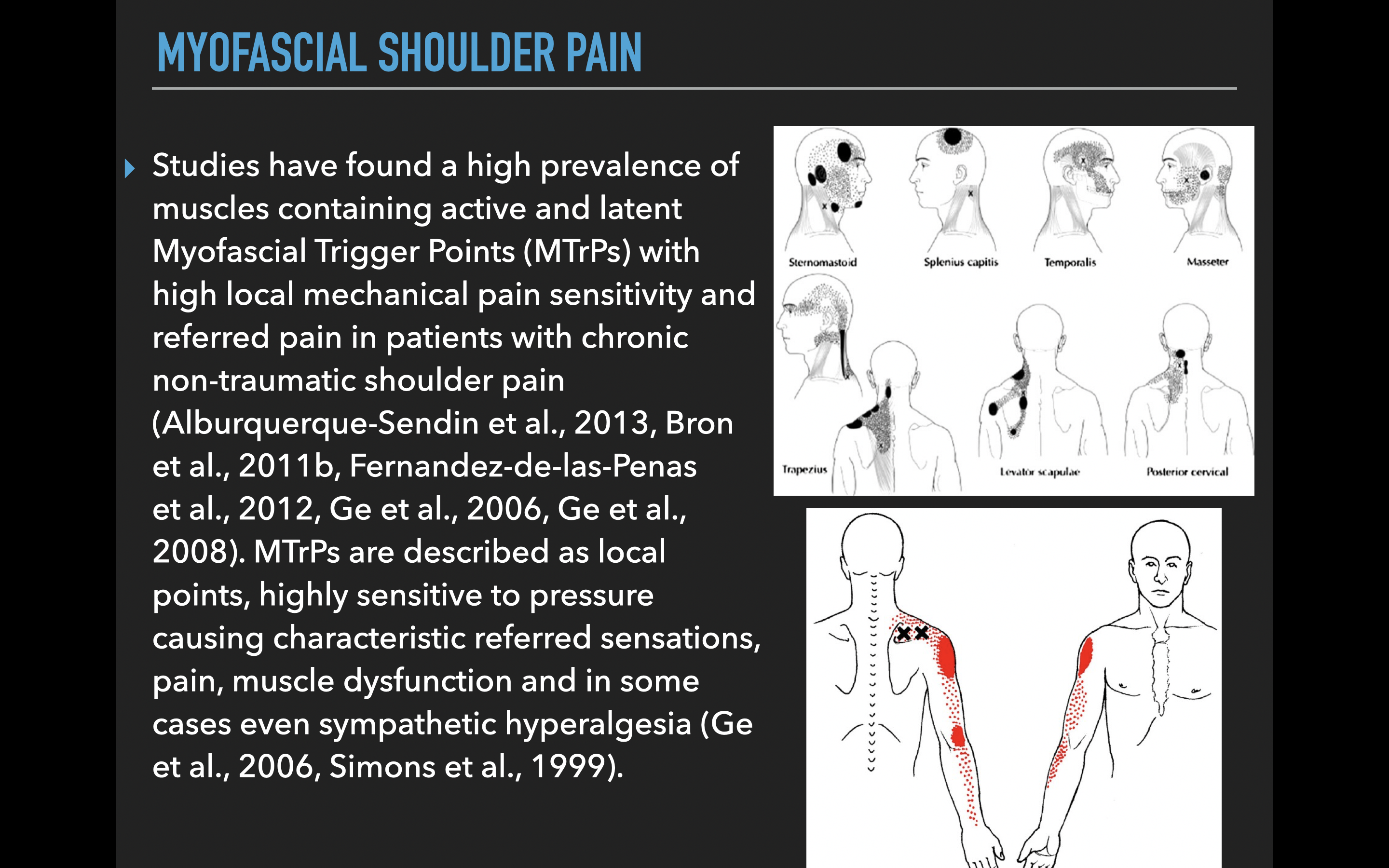Beyond Rotator Cuff Strength: The Fascial Science Behind Stubborn Shoulder Pain
2025-11-15

It can be overwhelming, you or your client has shoulder pain and you have done all the work that is suppose to help the issue. you’ve probably noticed something interesting about shoulder pain: sometimes it doesn’t behave the way we expect. A client might have “tight” shoulders, but stretching doesn’t fix it. Someone else might have “weak” rotator cuff muscles, yet even well-designed strengthening programs don’t fully resolve their discomfort.
More and more, research is showing us that in many cases the missing piece of the puzzle isn’t muscle or joint it’s fascia.
Fascia has gotten plenty of buzz over the last decade, sometimes in ways that sound a bit mystical. But we don’t need to go into fringe theories to appreciate its importance. High-quality studies are now demonstrating that fascia plays a meaningful role in shoulder pain, mobility, and functional movement and that targeted fascial interventions can make a real difference.
How fascia is often portrayed on social media.
Let’s break it down in practical, everyday terms.
What Fascia Is & Why It Matters
Fascia is the connective tissue that wraps around and through muscles, connects muscle groups together, supports nerves and blood vessels, and even links the upper and lower body. Think of it like the body’s internal “webbing.”
We used to think fascia was just packaging, but now we know it’s highly sensory, responsive, and deeply integrated into how we move.
When fascia becomes stiff, sticky, dehydrated, or stops gliding the way it should, the body compensates. That compensation can show up as stiffness, pain, reduced mobility, or altered motor patterns.
This is especially true in the shoulder, where multiple layers of fascia surround the rotator cuff, pectorals, deltoids, and the entire scapular region. Because the shoulder relies on smooth, coordinated motion across many muscles, even small fascial restrictions can have big effects.
Myofascial Integrated Movement Drills like physical therapist, Jessica Bento shows can really help improve such mobility of fascia and muscle.
How To Improve Fascial Mobility & Shoulder Pain
Here’s where things get really interesting. A growing body of research is showing that fascial dysfunction contributes to shoulder pain in measurable, observable ways.
Fascial “Stickiness” Is Linked With Shoulder Pain
In one study, researchers used ultrasound shear-strain imaging to examine how well the fascia in the pectoral region glided over underlying muscles. In individuals with chronic shoulder pain, the painful side had significantly reduced fascial glide.
In simple terms: the fascia wasn’t sliding it was sticking. This impaired movement likely altered shoulder mechanics and contributed to the pain.
A systematic review found that myofascial trigger points tight, irritable spots in muscles/fascia are highly prevalent in people with shoulder pain. These trigger points can change movement patterns, reduce force output, and increase pain sensitivity.

What Does This Mean For You?!
The takeaway isn’t that fascia replaces strength training, mobility work, or good coaching. Rather, it helps us understand why some clients don’t respond to those methods alone.
Shoulder pain isn’t always a strength issue: Sometimes the muscles are plenty strong, but the fascial layers around them are not gliding. Adding more load in these situations may actually reinforce compensations rather than address the root cause.
Just stretching may not be enough: Fascia responds better to slow, movement variability, and techniques that encourage tissue hydration and glide. It is fascial connections that help explain how the core and hips are interrelated to shoulder function and movement (PMID: 22666599, PMID: 39725018)
It isn’t just about muscles or even fascia: We often forget that the body doesn’t work with just the parts of the body. Our brain (nervous system) are always in constant communication with our body dictating both pain and even movement. That is why there is a great body of evidence that mediative movement drills can not only help us address muscle and fascia, but reducing the tone of the nervous system has been shown to improve movement and reduce pain (PMID: 30057055, PMID: 38451393)
I hope with posts like this you begin to appreciate common issues like lack of shoulder mobility and even discomfort/pain can be way more than just what one muscle or even system does. That is why with our Myofascial Integrated Movement system we put the many components together so that we can address all aspects of helping how we move, feel, and perform.
This week only we have 35% off ALL our Myofascial Integrated Movement programs. Check out how to help the biggest issues impacting shoulders, knees, and even backs. Use code “mim35” HERE
© 2025 Ultimate Sandbag Training. Site by Jennifer Web Design.






